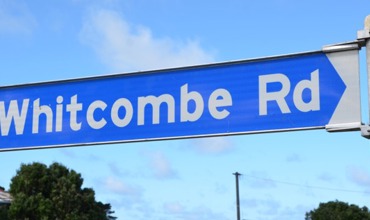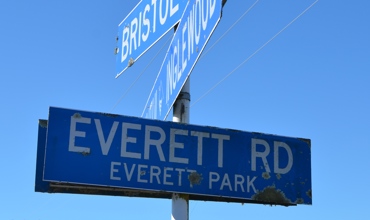Catalina Place runs off the eastern end of De Havilland Drive in the industrial area of Bell Block. The small street used to be part of Te Ārei Road, but was renamed in 1997 to match others in the subdivision of the old airport land which were inspired by various aircraft and aviation companies.
The Catalina was a seaplane produced by Consolidated Aircraft in San Diego. First flown in 1935 and named after Santa Catalina Island off the coast of southern California, it was 20 metres long with a wingspan of 31.7 metres and a top speed of 282 kmph. Catalinas were used for bombing, reconnaissance and rescue missions during the Second World War.
The US Navy used Catalinas painted black, known as “Black Cats”, to seek out Japanese ships by radar at night across the western Pacific and pick up Allied survivors from crashed planes and sinking ships. One Catalina rescued 56 sailors in high seas after the heavy cruiser Indianapolis was torpedoed by a Japanese submarine. When there was no more room inside, the crew tied sailors to the wings – unable to fly, the Catalina acted as a lifeboat, protecting the men from sharks until more help arrived.
More than 3000 Catalinas were manufactured with 56 operated by the Royal New Zealand Air Force between 1943 and 1953. Provided under lend/lease arrangements, they were engaged in anti-submarine, shipping escort, rescue and transport roles during the war. Edmund Hillary was a navigator on a Catalina with the No.6 Squadron. These Kiwi Catalinas continued to be used after the conflict for maritime surveillance, search and rescue operations, cyclone relief and communications around the South Pacific. All were eventually scrapped by 1955.
A 1944 Canadian PBY-5A Catalina, purchased and restored by the New Zealand Catalina Preservation Society, is one of only a few remaining operational Catalinas left in the world and the only one still flying in the southern hemisphere.
This story was originally published in the Taranaki Daily News.



